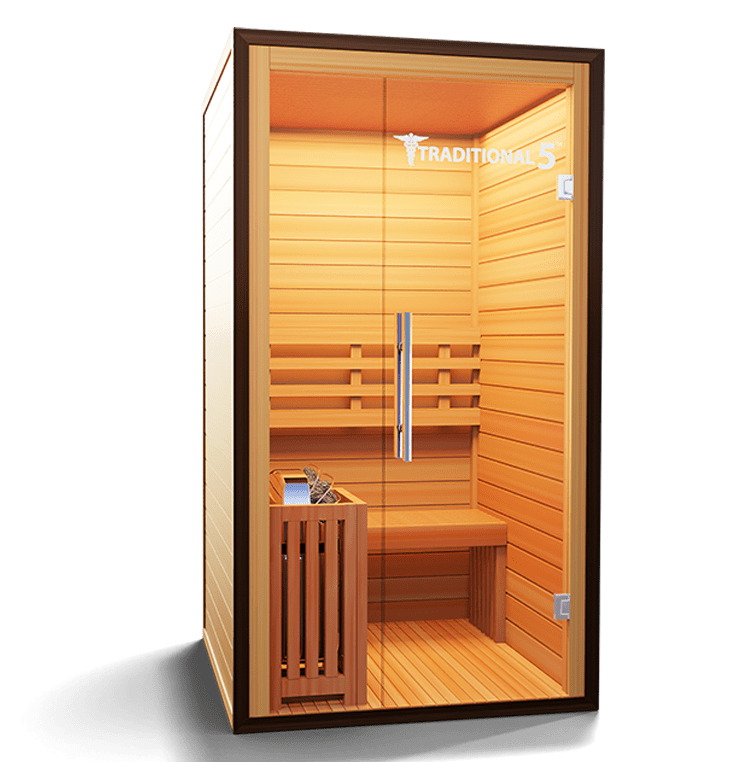Traditional Sauna - Truths
Traditional Sauna - Truths
Blog Article
Not known Details About Traditional Sauna
Table of ContentsThe Traditional Sauna PDFsThe Main Principles Of Traditional Sauna Some Known Factual Statements About Traditional Sauna The smart Trick of Traditional Sauna That Nobody is Talking About
The majority of the weight shed in a sauna is water loss and is re-gained upon rehydrating. Without a doubt sauna can be an essential component of a healthy and balanced weight loss program. To check out the differences between typical and IR saunas, I will certainly divide these into verifiable, theoretical, and fabricated differences.Therefore, the most popular factor in the saunawhich goes to the ceiling straight over the sauna heateris generally between 185 and 190 F. Traditional Sauna. Claims that a conventional sauna exceeds 200 F is simply not real and not suitable for electric saunas sold in the US. The temperature for a far-infrared sauna is usually set between 120 and 140 F; however, unlike the conventional sauna, the goal in and IR room is not to attain a heat
Due to this, the temperature difference is practically unnecessary, given that extreme sweating leads to both sauna kinds, but the approach of heating up the body is different. In an IR sauna the bather will certainly feel hot and will certainly sweat a lot, however at much lower temperatures. Hence, if the goal is to spend longer time periods in the sauna, the IR sauna is a great option.

The 8-Minute Rule for Traditional Sauna
When the heat is attained, the elements cycle on and off to maintain the high temperature. A lot of typical sauna individuals take pleasure in putting water over the rocks to develop vapor to raise sauna humidity degrees. The advantages of putting water over the rocks include: making the area extra comfy, moistening the nasal passages, and permitting the usage of aromatherapy by blending necessary oils with the water.
In a far-infrared sauna, the warm waves permeate the body to properly warm the body and elevate the body core temperature level. To accomplish this raised temperature, Far-infrared emitters develop infrared power which is close to the same wavelength as that which the body naturally emitsoften described as the "Vital Range" of 7 to 14 microns), so the energy is well received by the body.
When the power goes into the body, it causes the body temperature level to enhance and eventually results in sweating. In an infrared sauna it is very important for the emitters/heaters to continue to be on practically regularly. Since there is no mass of rocks to preserve heat, the sauna will certainly cool down if the emitters closed off.
As my link stated over, the sauna bather in an infrared area intends to place himself before running emitters to get maximum benefit from the heat. The heating time for both rooms can be extremely different, depending upon just how the areas are made use of. For a standard sauna, a bather needs to permit 30-40 mins for the room to accomplish a wanted temperature level and to properly pre-heat the rocks.
The Main Principles Of Traditional Sauna
A well built sauna will commonly achieve a temperature of 150-160 F in concerning 30-40 mins (Traditional Sauna). For hotter temperature levels, the area might need to warm for a longer duration. As soon as the space achieves established temperature, the heater will cycle on and off, generally running regarding 50% of the time. The insulated walls and the heated rocks will certainly maintain the area warm and at stable temperatures.
To some, 15 minutes was "wasted" while the infrared energy heated the wood panels instead of heating a body, while others discover a pre-heated area to be more comfortable and believe a raised beginning temperature is needed to begin sweating. The size of recommended use for each space is approximately the exact same (10-15 mins per session); however, due to the lower air temperatures and the capacity to really feel the results of infrared warmth faster than a typical sauna, it is not unusual for an individual to spend a total amount of 20-30 minutes in an infrared sauna.
Traditional saunas tend to be bigger (thus use more power) than infrared saunas, although traditional saunas are definitely available in one and two person dimensions too. For a two-person standard sauna, 5x6 or 5x7 dimension is most prominent. The top bench can pleasantly seat 2 or three people and is also enough time to relax during the sauna session.


The typical cost per kWH of electricity in the U.S. is approximately $0.11, so a 4.5 kW heater will certainly set you back about $.50 to run for one hour, if the heating unit runs continually for one hour. Generally a sauna heating unit will certainly compete 75% of the very first hour and 50% of subsequent hours on since the elements cycle once the set temperature level is achieved.
Traditional Sauna for Dummies
A linked here 2 individual far-infrared space is usually literally smaller sized than a typical sauna, usually regarding 4' x 4' or smaller sized. The IR heating system is typically 1.5-1.7 kW utilizing a 120 volt 15 amp plug-in solution. Because the area can be used earlier than a sauna space, we will certainly think the area is made use of for to of an hour including warm up time.
There is a hardly ever reviewed difference in the social experience in between the 2 areas. While our click for more culture has actually shed a few of the social advantage of the standard sauna experience, it can be really socially satisfying. From household time in the sauna, to heart-felt conversations with loved ones, to sauna partiesthe typical sauna experience can result in intimate mingling.
The majority of higher end infrared rooms consist of tinted light treatment, sound systems and full-glass fronts.
Report this page